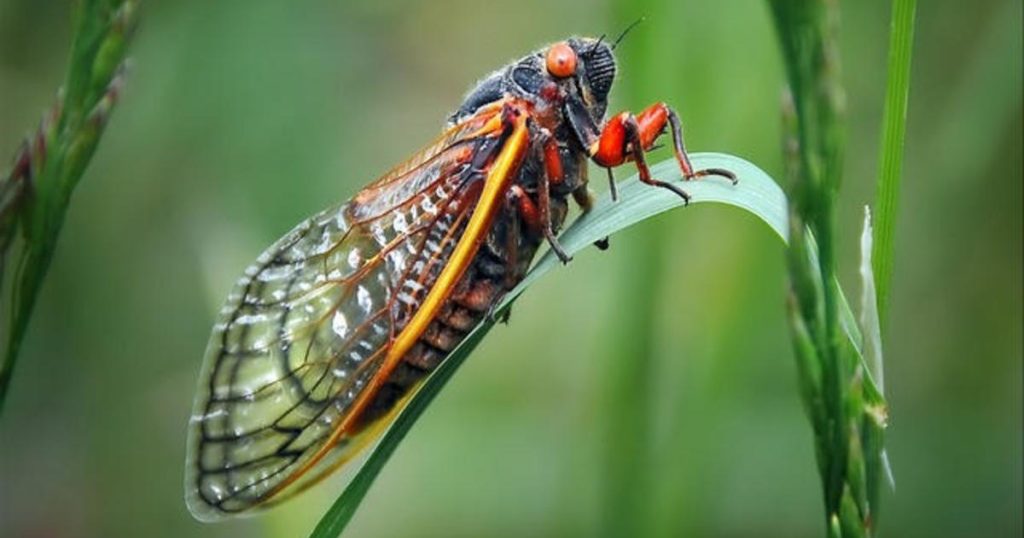Periodical cicadas emerge in hordes every 13 or 17 years in broods labeled with Roman numerals. In 2024, two broods are expected to appear, with Brood XIX and Brood XIII emerging across parts of the Midwest, Southeast, and primarily Illinois, respectively. Cicadas emerge from underground once the soil temperature reaches 64 degrees, with their emergence dates varying depending on location. In 2024, they are expected to emerge sometime in May or early June, according to experts.
Cicadas spend the majority of their lives underground and emerge to reproduce at the end of their 13 or 17-year cycle. Females lay hundreds of eggs in woody plants, using their ovipositor to inject them into branches. The eggs hatch after six weeks, with the newborn cicadas falling to the ground and burrowing into the soil to remain for another 13 or 17 years. Adult cicadas die shortly after mating, lasting only about a month above ground. Males attract mates by buzzing loudly, resulting in the loud droning sound associated with cicadas.
Despite the large numbers of cicadas emerging, they pose no threat to humans or other animals. While they may leave behind their crusty exoskeletons and emit a roadkill-like smell when they die, they are not harmful. Some wildlife may eat cicadas, but it is typically not dangerous. Pets that consume cicadas may experience irritation in their gastrointestinal tract if they ingest a large amount or part of the exoskeleton. Using insecticides to keep cicadas away could harm animals that consume the insects.
Humans can also eat cicadas, best consumed as adults after they have molted but before their exoskeleton hardens. However, individuals allergic to shellfish should avoid eating cicadas, as some may carry a sexually transmitted fungus called Massospora cicadina. This fungus infects a portion of cicadas’ bodies, turning them into “zombie cicadas” that continue their normal routines despite being overtaken by the fungus. This fungus is found in less than 5% of cicadas, and its impact on other wildlife remains unclear.
Cicadas feed on trees and bushes by piercing small twigs to withdraw nutrients and carbohydrates from the water in plants. Experts advise against planting new trees ahead of a cicada emergence, as the bugs can damage them. To protect small trees and shrubs from cicadas, netting with small openings can be used to prevent the insects from accessing the plants. Contrary to popular belief, cicadas are not locusts and do not eat plants. They emerge solely to mate and lay eggs, posing no threat to foliage.
In conclusion, the emergence of periodical cicadas every 13 or 17 years in large, buzzing hordes is a natural phenomenon that poses no danger to humans or animals. Despite their loud buzzing and potentially off-putting appearance, cicadas play a vital role in the ecosystem through their reproductive activities and provide food for certain wildlife species. Understanding their life cycle, diet, and behavior can help individuals coexist with these fascinating insects during their periodic appearances.


